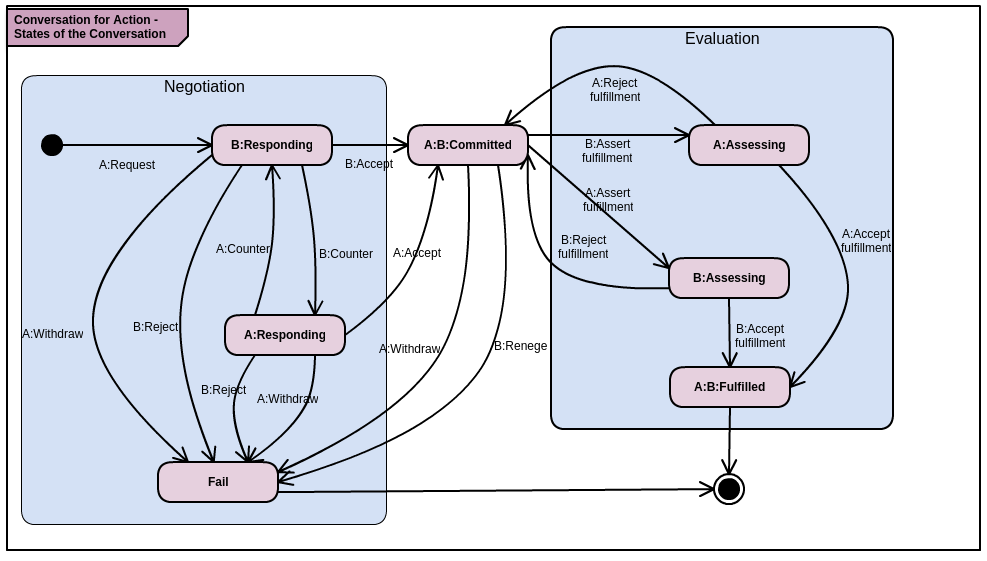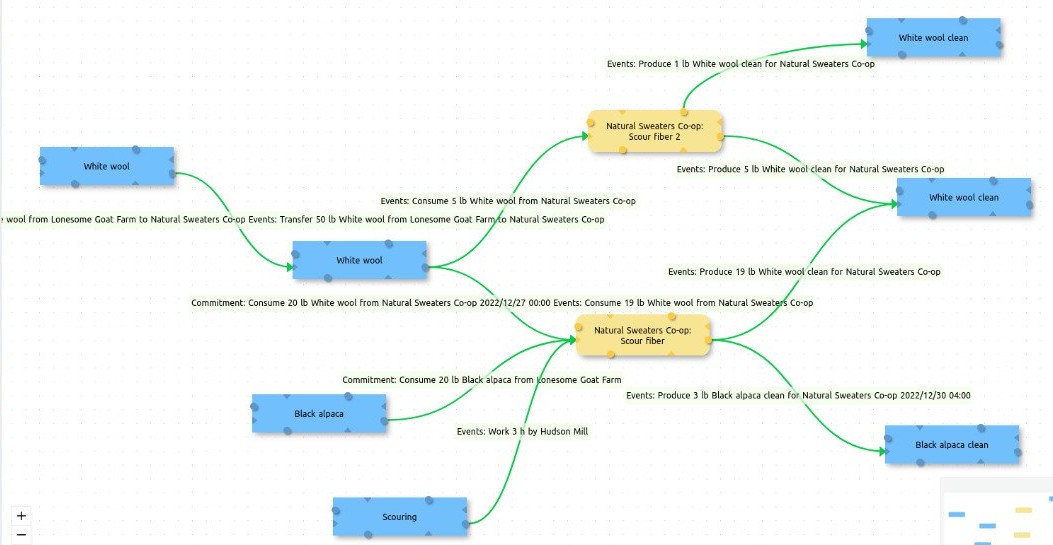Using Valueflows to sync up and coordinate economic networks
Intro
Sync up means to bring two or more agents in an economic network into a synchronized state, that is, where the agents have agreed on what they have done together and intend to do next.
Coordinate means to continue to synchronize the actions of two or more agents through a series of agreed-upon actions, like a dance following an agreed-upon choreography,
Such choreography often comes in patterns which can often be named and re-used to guide coordination. [asking Mike Hales for a citation here...}
State machines
From Wikipedia:
“a state machine, is a mathematical model of computation. It is an abstract machine that can be in exactly one of a finite number of states at any given time. The FSM can change from one state to another in response to some inputs; the change from one state to another is called a transition. An FSM is defined by a list of its states, its initial state, and the inputs that trigger each transition.”
Besides computation, a state machine is also a model of coordinated actions between agents, and also a model of conversations about those coordinated actions.
Conversation for action
CfA is one of the main named patterns of coordination used by Valueflows. Here is a diagram of the CfA state machine:

“In order for action to occur between two people, one person must make a request or an offer to get things started. If no one makes a request, or no one makes an offer, nothing is going to happen between them.
“Once a request or an offer is made, then the ball is on the other person to determine what happens next, and so forth, until the person making the request, or accepting an offer, is satisfied.”
from CfA Playground
At each phase of the conversation (Negotiation and Evaluation) two agents, A and B, are either synchronized (agreed) or the conversation fails.
Coordinating Textile Lab flows
See https://write.as/economic-networks/coordinate-the-flows
The Textile Lab flow patterns will (eventually) be captured in Valueflows Recipes. Here is a diagram of their proposed flow for a knitted hat:

The flow in that diagram goes from right [the Designer] to left {the hat].
The Designer is the coordinator, and so will be involved in each of the conversations for action:
* Designer<>Farmer
* Designer<>Trucker
* Designer<>Washer
* Designer<>Spinner
* Designer<>Knitter
etc.
What is a good UI for the coordinator in those Conversations?
The providers of goods and services may be involved in several of those conversations, but each one will usually start with one offer or request, and end with one delivery and its evaluation, and their interactions will be relatively similar in each case..
The coordinator, by contrast, may be involved in several conversations at the same time; even several conversations in the same flow from raw materials to finished garments. So they will need to know their current stage (where in the flow) and current state (in which conversation in which flow) and responded appropriately in each case. The UI will need to help them manage all of those conversations at all of those stages in all of those flows.
One possible UI for the coordinator:
Two main panes:
* On the left, a graphical view of the resource flows in action.

* On the right, a threaded chat showing each of the conversations the coordinator is involved in.
The threaded chat would mostly consist of structured messages using Ivan Minutillo's economic sentence structure. In other words, each message in the chat would be a Valueflows statement. Ivan is working on https://bonfirenetworks.org/ which includes Valueflows, so maybe he'll do it.
The messages in the threaded chat panel could be simplified to
| VF Action | Provider | Receiver | ResourceSpec |
|---|---|---|---|
| Produce | Goat Farm | Natural Sweaters Co-op | White wool |
...and then if the coordinator clicks on a chat line, it would open up in a bigger edit form.
That same simplified representation could be used for other Valueflows statements in other places. It's almost the same as the text on the arrows on that resource flow diagram.
More conversationally, it could be
“Natural Sweaters Co-op requests Goat Farm to produce White Wool”
or
“Goat Farm commits to produce White Wool for Natural Sweaters Co-op”
or
“Goat Farm produced White Wool for Natural Sweaters Co-op”
depending on the state of the desires of the agents to perform the action.
Mockup to come...